Affiliate links on Android Authority may earn us a commission. Learn more.
Redmi Note 7 Pro vs realme 3 Pro: Battle of the mid-rangers
Published onApril 23, 2019
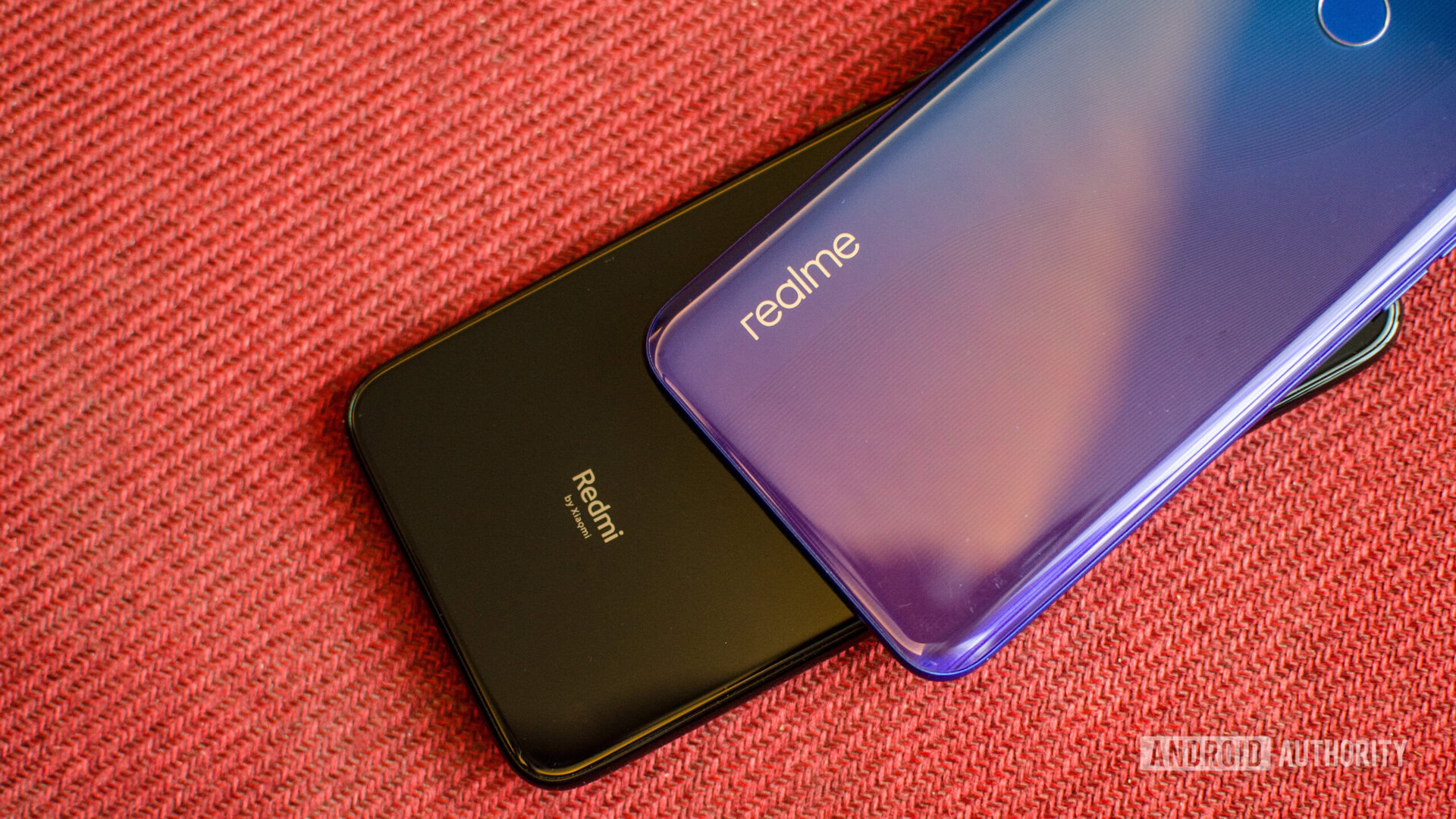
Realme‘s genesis was as a direct competitor to Xiaomi’s Redmi series. Backed by OPPO, realme has managed to clock in solid numbers and pose a threat to Xiaomi’s dominance in the mid-range segment. If last year’s realme 2 Pro fired warning shots at the Redmi Note 6 Pro, the realme 3 Pro is a declaration of war.
In our review of the realme 3 Pro, we talked about how it is extremely close to not just besting the Redmi Note 7 Pro but claiming the throne for one of the best devices in the sub 20,000 rupees segment. Today, we take a look at just how well the realme 3 Pro compares to the Redmi Note 7 Pro and what, according to us, is the best option between the two.
This is our realme 3 Pro vs Redmi Note 7 Pro comparison.
Design
How a phone looks and feels in the hand plays a big role when you’re picking up a new handset, and this one definitely goes in the Redmi Note 7 Pro’s favor. The glass sandwich design and high-gloss reflective colors help the phone climb up a notch as far as visual appeal is concerned. Simply put, the Redmi Note 7 Pro feels much better in the hand.
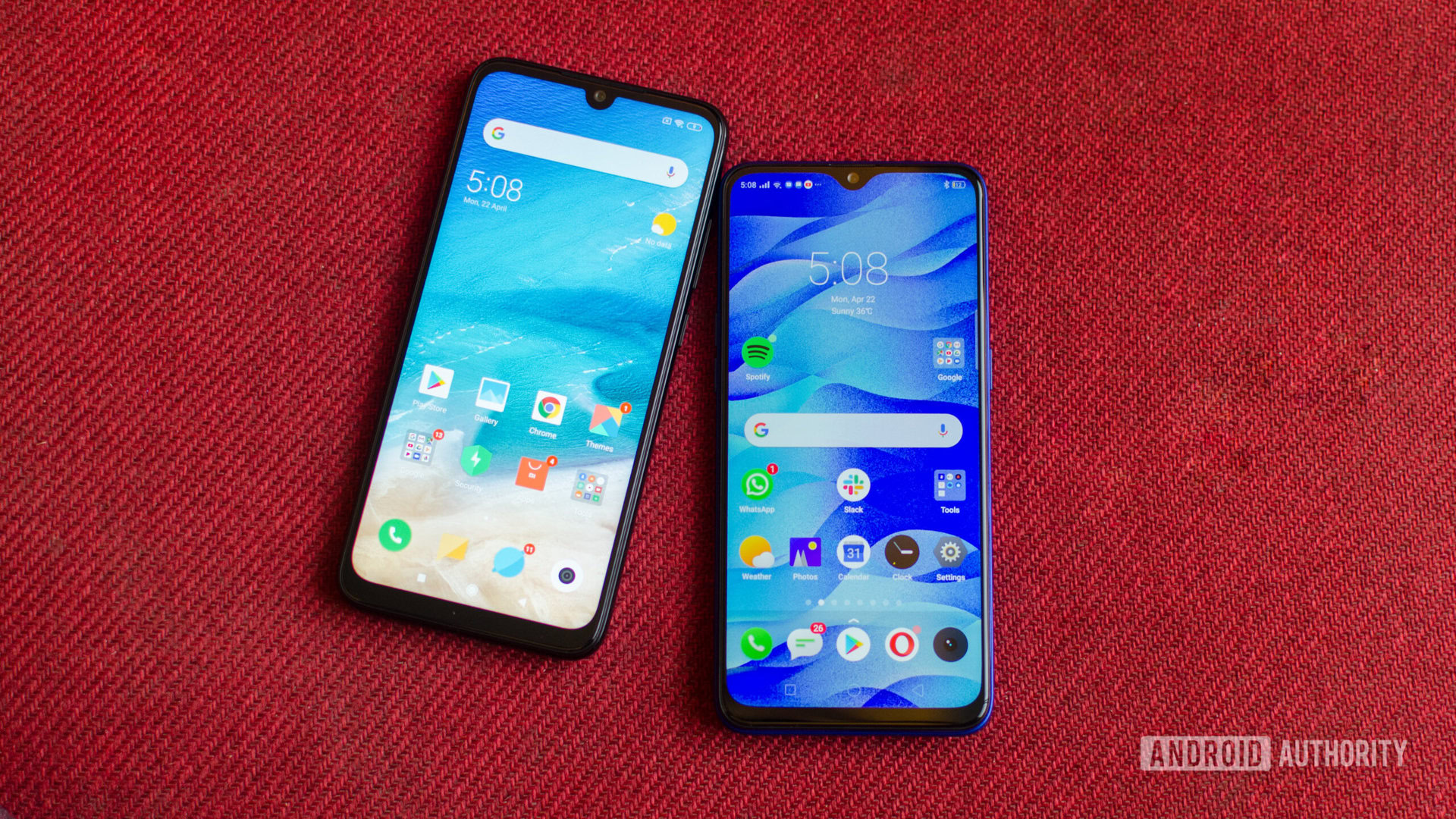
From the front, both the Redmi Note 7 Pro and the realme 3 Pro look very similar. The biggest difference is perhaps the stylistic choices made around the notch. From the size of the bezels to the chin, there is a certain level of homogeneity visible in most mid-range smartphones and these two don’t stray from the crowd. Buttons on both phones are highly tactile and the phones feel very well put together.
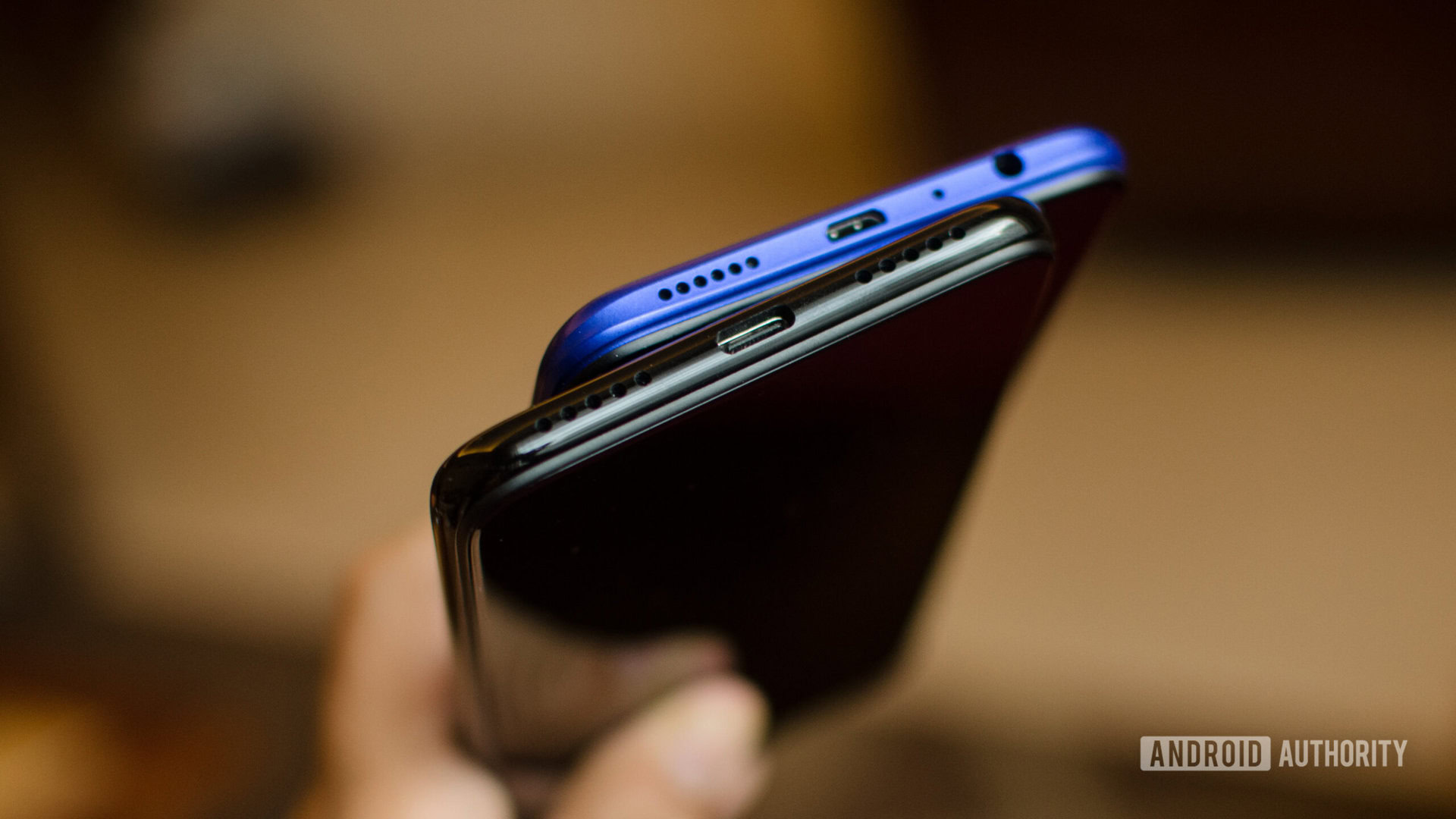
Potentially a result of VOOC charging or just cost saving on realme’s part, the realme 3 Pro ships with a micro-USB port for charging. Since the market positioning of the two devices is towards tech-savvy youth and people who demand more from their phone, the choice puts the realme at a disadvantage compared to the USB-C port on the Redmi Note 7 Pro. Honestly, the sheer convenience of being able to plug in a USB-C cable from either side is a major selling point for me. I can see this being a deal-breaker for many enthusiasts.
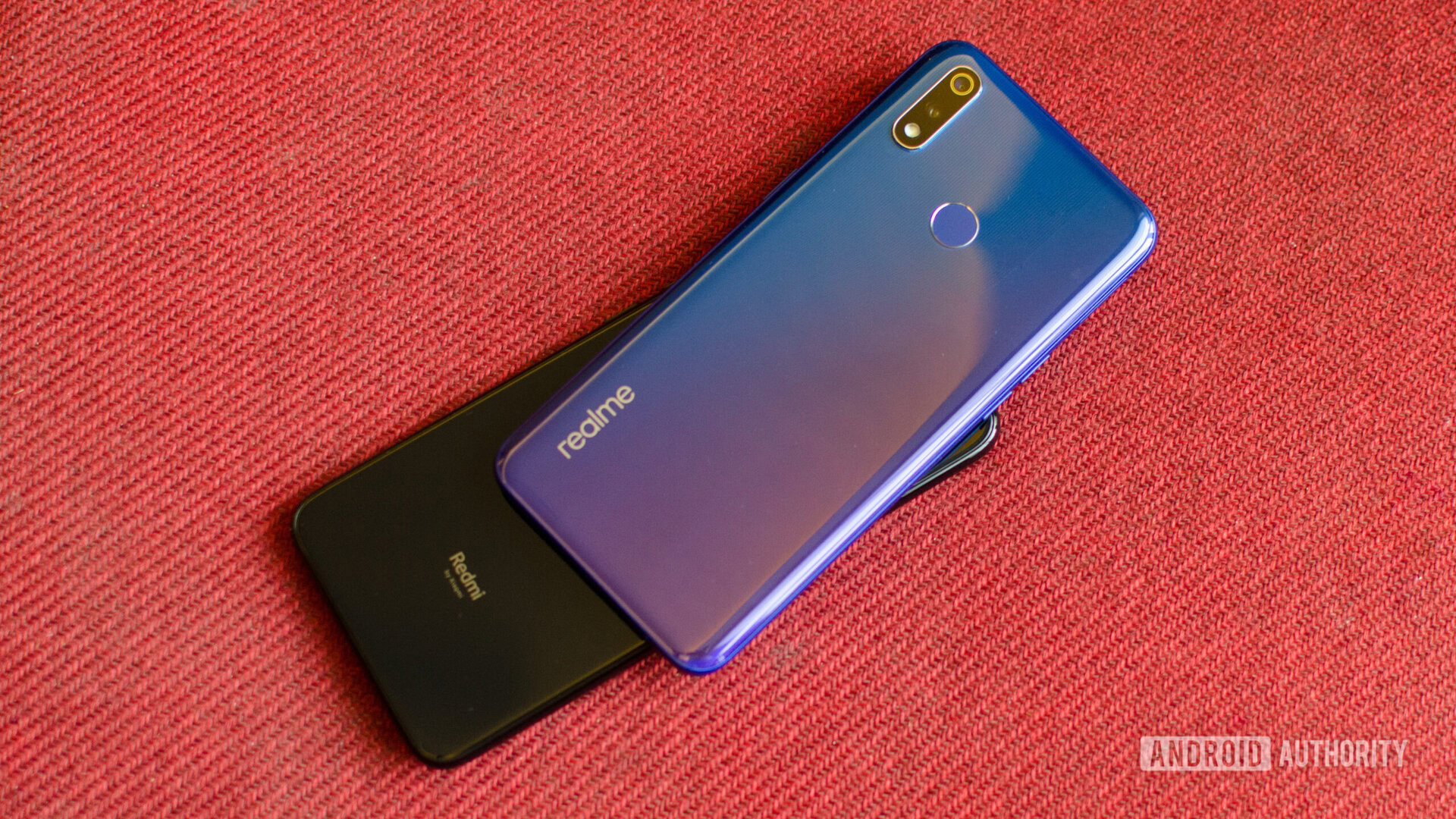
The realme 3 Pro takes the popular gradient finish to a whole new level with the inclusion of S-shaped lines in the design. Rather hard to capture on camera, the curving pattern definitely helps make the phone more visually appealing. The gold accents and prominent realme logo help enhance the looks of the phone. By all measures, the realme 3 Pro is a very pretty device, but the choice of materials dampens our enthusiasm for it.
The high-gloss polycarbonate attracts scuffs, fingerprints and lint, making it hard to keep it clean. It also doesn’t feel as nice as glass in the hand. While you will probably put on a case on either phone, our vote goes to the Redmi Note 7 Pro in the design and build department.
Display
Both the realme 3 Pro and the Redmi Note 7 Pro sport large 6.3-inch Full HD+ panels that look plenty good. The panels are largely similar but are tuned differently. What you prefer will come down to your personal choice, but the realme 3’s display is tuned to err on the side of cooler tones. The display is fairly accurate, but compared to the boosted saturation levels on competing devices, you might find it a bit dull.
The realme 3 Pro might have a more accurate display, but multimedia content pops on the Redmi Note 7 Pro's screen.
The Redmi Note 7 Pro, on the other hand, opts for a slightly warmer tuning and ever so slightly saturated colors. Icons and images pop on the display and watching media is a pleasurable experience. Both displays are more than adequate in harsh sunlight and allow you to adjust the color temperature. The realme 3 Pro and Redmi Note 7 Pro both use Gorilla Glass 5 to protect the display.
Performance
This is where things get interesting. realme’s entire pitch for the phone is how it handily beats the Note 7 Pro on the performance front. The reality is a bit more complicated.
Yes, the realme 3 Pro has a Snapdragon 710 chipset that, at least on paper, ranks above the Note’s Snapdragon 675 chipset. Real-world CPU performance is extremely similar between the two phones. The 675 is an octa-chipset with clusters of two and six Kryo 460 cores tuned for performance and efficiency respectively. The Snapdragon 710 uses the older Kryo 360 cores in a similar configuration.
For day-to-day use, you can expect the phones to be more or less on par. That’s not really the case with GPU performance. The Adreno 616 GPU on the 710 is more powerful than the 675’s Adreno 612. While both phones excel at popular games like PUBG, avid gamers will notice fewer frame drops on the realme 3 Pro. The realme 3 Pro is also one of the first (if not the first) budget phones to officially support Fortnite. The game isn’t particularly popular in India but hey, if you want to play Fortnite, your realme 3 Pro will handily run the game.
The huge 4,000mAh batteries are big selling points of both devices. In our testing of Redmi Note 7 Pro vs realme 3 Pro, both phones consistently managed well over a day of use. We consistently managed to get to 6pm on the second day of use on the realme 3 Pro without having to worry too much about battery life. In addition, the realme 3 Pro supports VOOC 3.0-based fast charging. Topping off the phone from zero should take you just about 80 minutes. The best part though is the fast charger is included in the box. While the Redmi Note 7 Pro does support Quick Charge 4.0, a compatible charger is not provided by Xiaomi in the retail box.
Camera
The realme 3 Pro packs the same Sony IMX 519 camera sensor as on the OnePlus 6T. The 16MP sensor is paired with a secondary 5MP camera for depth capture. Meanwhile, the Redmi Note 7 Pro has a 48MP IMX 486 processor that works best when pixel binned down to 12MP. Both phones can record 4K video, but the realme 3 Pro is scheduled to ship with 960FPS super slow-motion capabilities as well. Our pre-release unit does not have this feature, but realme promised it will arrive via OTA.
Starting off with an outdoor shot, the realme 3 Pro’s image looks ready to post on social media straight out of the box. The image looks more dynamic and is generally brighter, though not necessarily more accurate than the Redmi sample. The Redmi Note 7 Pro does a better job at retaining details in the shadow areas, but there is a lot of low-level noise in the shot. The realme 3 Pro reduces noise but also doesn’t have the same level of detail.
Our second shot definitely caught us by surprise. With all settings at default, the Redmi Note 7 Pro wasn’t as quick or consistent as the realme 3 Pro to get a focus lock. The area around the model car’s grille isn’t as sharp and in-focus as the one in the photograph shot by the realme 3 Pro.
In our indoor, low-light test sample, the realme 3 Pro produced a much cooler-looking image but there is no doubt that it was the runaway winner here. The image is evenly sharp and focussed and exhibits lower noise levels and digital noise reduction artifacts.
Software
ColorOS 6.0 on the realme 3 Pro has seen a lot of improvements, including the addition of an app drawer, the revamped homescreen experience, larger toggles, and a cleaner notification bar. There are subtle tweaks all around. MIUI 10 on the Redmi Note 7 Pro is similar in its undertaking, but differs in its fundamental approach. This is largely due to the inclusion of ads across parts of the interface.
MIUI on the Redmi Note 7 Pro is the Achilles' heel of an otherwise fantastic device
Despite some quirks like the forced night mode schedule and the lack of Widevine L1 on our review unit, the realme 3 Pro’s software comes across as more refined and polished, which leads to a smoother, more enjoyable user experience. The software on the Redmi Note 7 Pro is perhaps the Achilles’ heel of an otherwise fantastic device. From the ads to the deep, almost intrusive addition of Xiaomi’s apps, they all take away from the experience.
Specifications
| Redmi Note 7 Pro | realme 3 Pro | |
|---|---|---|
Display | Redmi Note 7 Pro 6.3-inch IPS LCD 1080 x 2340 resolution 19.5:9 ~409 ppi | realme 3 Pro 6.3-inch full HD+ (2,340 x 1,080) LCD |
SoC | Redmi Note 7 Pro Qualcomm Snapdragon 675 (11 nm) | realme 3 Pro Qualcomm Snapdragon 710 |
GPU | Redmi Note 7 Pro Adreno 612 | realme 3 Pro Adreno 616 |
RAM | Redmi Note 7 Pro 4GB/6GB | realme 3 Pro 4GB/6GB |
Storage | Redmi Note 7 Pro 64/128GB Expandable with microSD card up to 256GB | realme 3 Pro 64GB/128GB Expandable |
Cameras | Redmi Note 7 Pro Front camera: 13MP, 1080p@30fps video recording Rear camera: 48MP, f/1.8 aperture, 1.6µm 4-in-1 super pixel, PDAF 5MP depth sensor f/2.4 aperture, 4K@30fps video recording, Dual-LED flash, EIS | realme 3 Pro Rear: Main: 16MP sensor with f/1.7 aperture Secondary: 5MP depth sensor Front: 25MP sensor with f/2.0 aperture |
Battery | Redmi Note 7 Pro 4,000mAh Quick Charge 4.0 support 18W USB-C | realme 3 Pro 4,045mAh VOOC 3.0 Charging |
Headphone port | Redmi Note 7 Pro Yes | realme 3 Pro Yes |
Software | Redmi Note 7 Pro Android 9.0 Pie with MIUI 10 | realme 3 Pro ColorOS 6 Android 9 |
Dimensions and weight | Redmi Note 7 Pro 159.2 x 75.2 x 8.1mm 186g | realme 3 Pro 156.8 x 74.2 x 8.3mm 172g |
Price | Redmi Note 7 Pro 13,999 rupees (4GB + 64GB) 16,999 rupees (6GB + 128GB) | realme 3 Pro 13,999 rupees (4GB + 64GB) 16,999 rupees (6GB + 128GB) |
Price and availability
Both the realme 3 Pro and the Redmi Note 7 Pro are priced at 13,999 rupees ($200) for the base variant and 16,999 rupees (~$245) for the top-end version. The base variants of both the realme 3 Pro and Redmi Note 7 Pro get you 4GB of RAM and 64GB of storage, with the top end version bumping this to 6GB of memory and 128GB of storage.
You can buy either phone from Flipkart or directly from the company store in the case of Xiaomi. The Redmi Note 7 Pro is also available offline.
realme 3 Pro vs Redmi Note 7 Pro: Verdict
The battle of the mid-rangers is a close one. It has come to a point where it is rare to find a bad phone in the mid-range segment. Between the Redmi Note 7 Pro and the realme 3 Pro, the former opts for a cleaner design that simply feels better in the hand. From the ergonomics to the choice of using a USB-C port, the Redmi Note 7 Pro has the realme 3 Pro beat as far as design is concerned. Performance is more or less on par across the two devices, though the realme pulls ahead in its gaming capabilities.
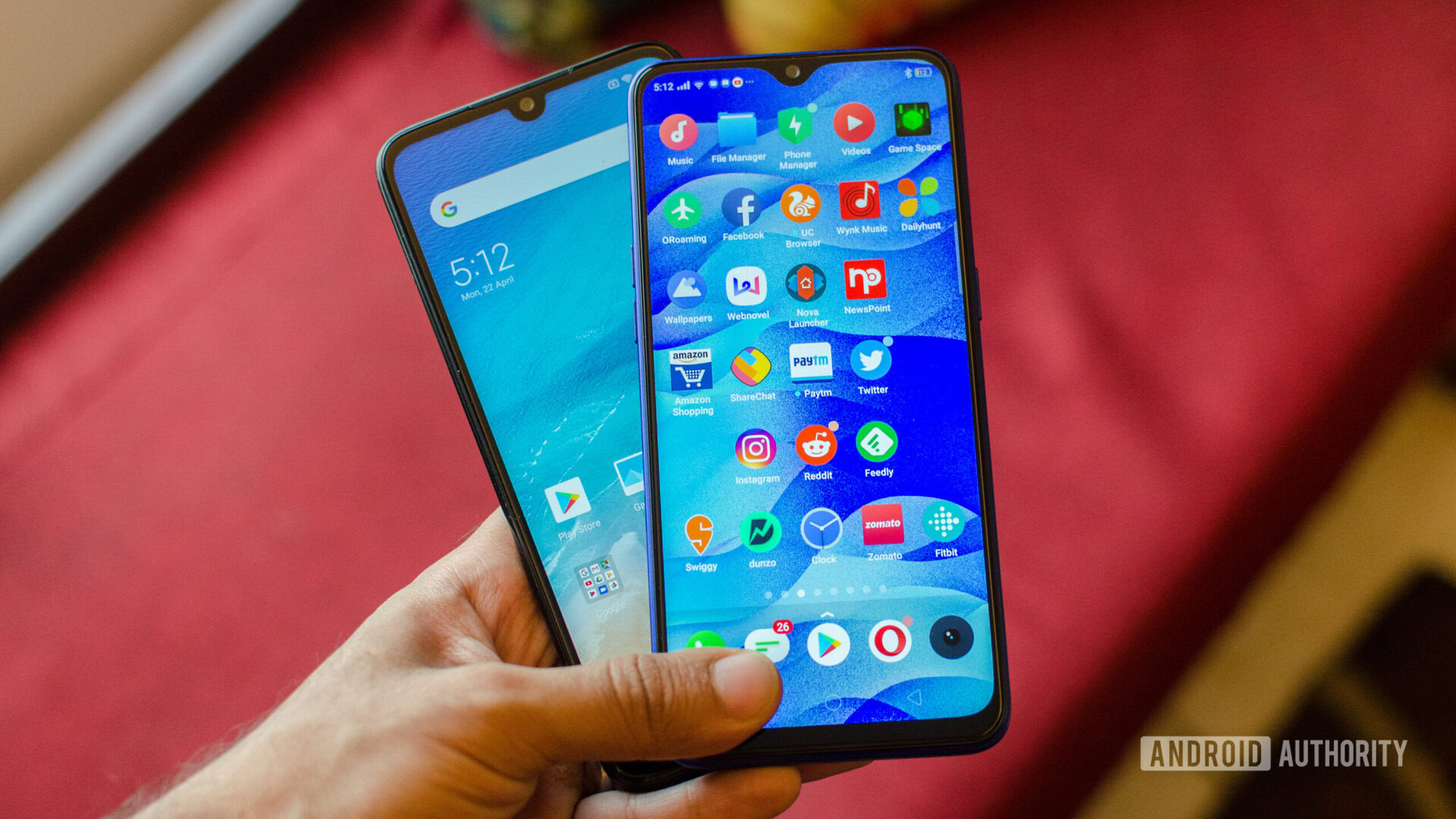
Where the realme 3 Pro definitely comes on top is in its camera capabilities, software, and battery technology. The phone turned out to be a lot more consistent with imaging than the Redmi and managed to get a focus lock every single time. Talking about the software, the lack of ads is a big one and beyond that too, ColorOS 6 feels more polished than MIUI on the Redmi Note 7 Pro. Finally, VOOC 3.0 is a big selling point. The ability to charge your phone to 100 percent in 80 minutes and to charge while gaming is important and the realme 3 Pro definitely wins this round.
For my money, I would likely opt for the realme 3 Pro, because of the more holistic experience of using the phone. What about you? What would you go for when choosing between the Xiaomi Redmi Note 7 Pro vs realme 3 Pro? How about the Samsung Galaxy M30? Let us know in the comments section.